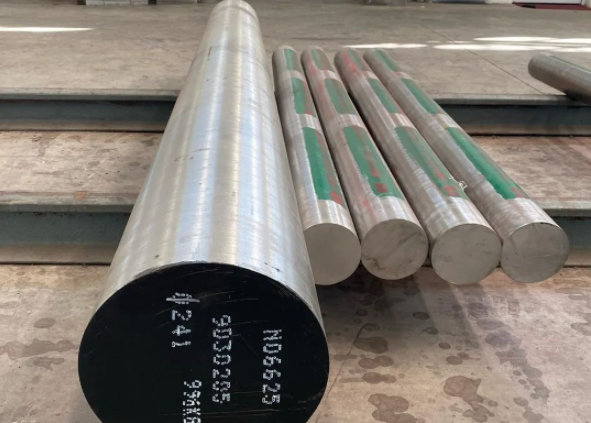What is lnconel 600 made of?
Like all INCONEL nickel alloys, lnconel 600 has excellent corrosion resistance and a range of other chemical properties that make it suitable for the harshest and most demanding environments, but this particular super alloy is known for its mechanical properties, and these make it a versatile choice for a wide range of applications.
In this article, we’ll take a closer look at these characteristics and how they are affected by the different ways in which Alloy 600 is handled.
The power of combinations:
Inconel 600’s primary composition is nickel (72%), chromium (14-17%) and iron (6-10%), and this combination is the key to its powerful performance and versatility.
The percentage of nickel in Alloy 600 has been calculated to take full advantage of nickel’s innate properties – ductility, toughness and corrosion resistance – without falling victim to stress corrosion cracking, a common problem with austenitic nickel-chromium alloys in environments where chlorides are present, and chromium enhances the oxidation resistance of alloy 600, while a small but significant amount of iron gives it additional strength.
This means that, even in nickel superalloys, Inconel 600 exhibits excellent performance in high temperature, oxidizing and corrosive environments, and it can be used from low temperatures all the way up to 1095°C, depending on use and handling.
Tensile Strength:
Tensile strength is a key characteristic for high stress, high pressure applications. It refers to the maximum stress value that a material can withstand when stretched without fracture. Tensile strength is expressed in thousand pounds per square inch (ksi) and Inconel 600 has a nominal tensile strength ranging from 75 to 220 ksi, however, this depends on many factors such as condition and form.
To achieve the maximum tensile strength of 220 ksi, alloy 600 requires heavy cold working, which is often combined with heat treatment.
Yield strength:
Another important property is yield strength. While tensile strength measures the point at which a material breaks under stress, yield strength is the point at which it begins to deform permanently and can no longer regain its original shape and size.
Alloy 600 is often annealed to reduce hardness and make it easier to form, this is a process where the metal is heated to a specific temperature, held there for a period of time and then cooled again, this process also improves corrosion resistance, in its annealed form alloy 600 has a moderate yield strength of 25-50ksi, again this range will depend on the form and condition of the metal.
However, as with tensile strength, the yield strength is significantly higher with recooling, for example, 150-210 ksi for Alloy 600 wire after cold drawing and spring tempering.
Fatigue Strength:
Tensile and yield strength are two factors to consider because they affect the service life of the component and whether it is likely to fail suddenly or gradually, fatigue strength is another key consideration.
Fatigue strength is the maximum stress a component can withstand when subjected to cyclic loading before it is damaged at the molecular level, and this damage leads to cracking and ultimately to component fracture. Fatigue is a particular risk in corrosive environments, and it is easy to overestimate the number of cycles required to initiate the process when relatively few cycles pass before the material begins to crack and then fail, which is referred to as low-cycle fatigue, and typically, this is The fluctuating stress of many rapid cycles leads to high cycle fatigue due to the repeated application of the same cyclic stress below the material’s yield strength value.
While the yield and tensile strength of Inconel 600 is severely affected by its treatment, this is not the case for fatigue, Alloy 600 continues to exhibit consistently good fatigue strength at low cycle fatigue, regardless of grain size (related to heat treatment), and it is unaffected by other mechanical property changes, the only case where the fatigue life of a component changes is at high cycle fatigue.
Impact Strength:
Impact strength-the ability to withstand impacts without cracking or deformation-is an area where Inconel 600 excels. Impact strength is measured in foot-pounds, and Alloy 600 has a strength of 160-180 foot-pounds per 13 mm plate thickness.
The impact strength of Alloy 600 is particularly impressive for two reasons, one being that the alloy is very light – parts made from Alloy 600 may be up to 40 percent lighter than parts made from similar metals – and the other being that the strength remains stable over a wide temperature range, and while metals typically become weak at low temperatures, here this is not the case.
Operating temperatures:
Inconel 600 is resistant to embrittlement in extreme cold, but it exhibits the same qualities at very high temperatures even under prolonged exposure, which means it is particularly resistant to creep: a failure in which a metal part gradually deforms over time before failing completely.
It is worth noting that very low temperatures can have an effect on some of the properties of Alloy 600. As an example, the tensile strength of a cold drawn Alloy 600 bar is reduced by 20% at low temperatures, however, as mentioned above, its impact strength will remain almost unchanged.
Applications:
Given its impressive operating temperature range, it is not surprising that Inconel 600 is often selected for use in high temperature environments. Its consistently good mechanical properties and stable performance mean that parts made from Alloy 600 will have a longer functional life and be less prone to catastrophic failure, making it a safe and cost effective choice in many cases.
It is an exceptional asset in applications where conditions are harsh and safety is critical, such as the chemical processing and petrochemical industries, Inconel 600 is also the backbone of the nuclear industry, in short, Inconel 600 is an excellent all-round performer in all conditions.



